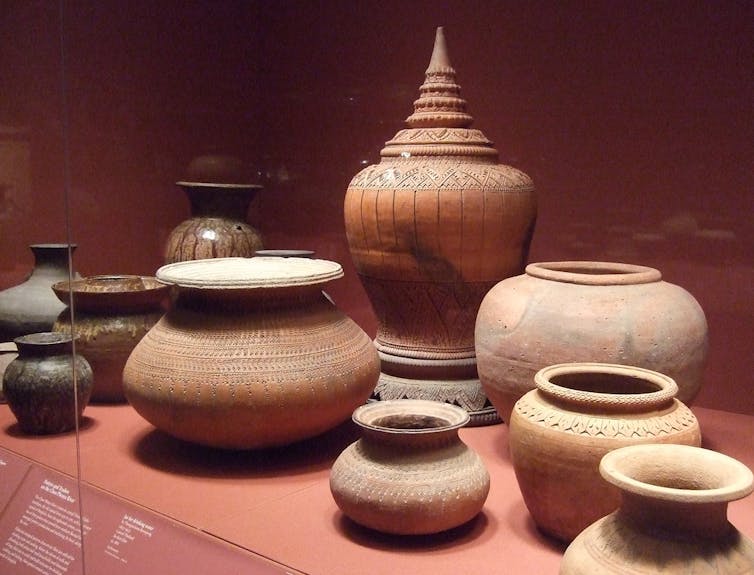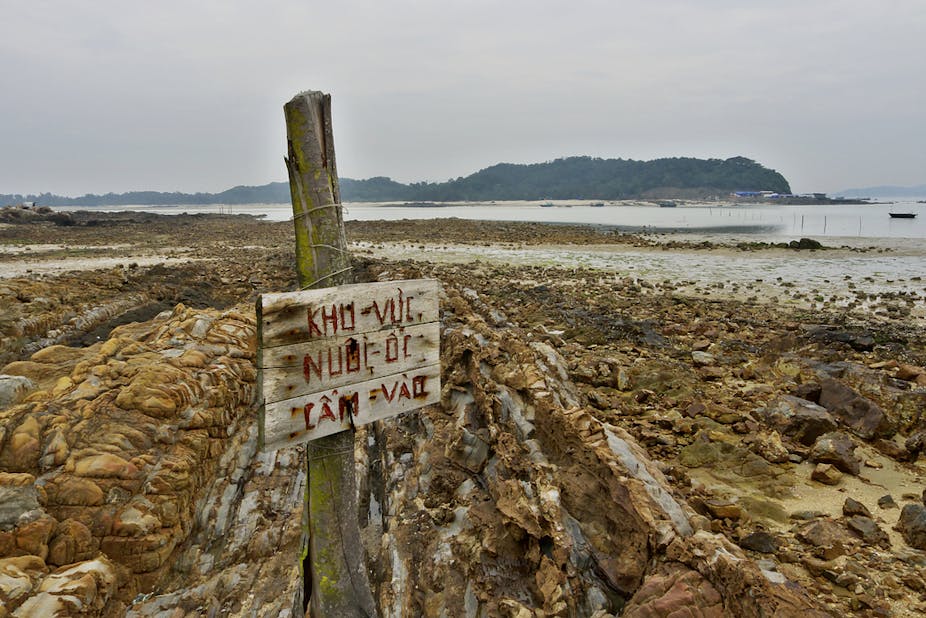Vietnam has thousands of kilometres of coastline, and may have thousands of shipwrecks. Many of these wrecks would be loaded with archaeologically fascinating and significant items. But the country has struggled to preserve its underwater cultural heritage. To date the protection and preservation of Vietnam’s underwater cultural heritage, such as shipwrecks, has had a low priority.
Vietnam has a very long coastline (more than 2,000km) and seafaring activity has been extensive for at least 2,000 years. Vietnam is centrally located in South East Asia and was on the “Maritime Silk route” that ran from China to the west via the South China Sea.
Very little is known about how many shipwrecks, or other underwater cultural heritage sites, might exist in Vietnam. Almost no maritime archaeology survey work has been done, but I think it is likely that there will be thousands of sites.
Unfortunately, the little work that has been done in Vietnam in the past has often been done by, or in association with, treasure hunters. Large quantities of underwater cultural heritage have been sold. For example, thousands of ceramic artifacts from shipwrecks located at Vũng Tàu, Ca Mau, Binh Thuan and Hoi An have been sold at auction.
One of the problems with any government selling artifacts from shipwrecks is that it places a price on them. Instead of being considered part of the cultural heritage of the nation and belonging in museums or in public collections, they are considered primarily for their monetary value.
Recently, a 14th century shipwreck was found in the waters of Binh Chau Commune (Binh Son District) in Quang Ngai province. Researcher Pham Quoc Quan, former director of the National History Museum of Vietnam, stated that experts had confirmed the recent shipwreck found in Quang Ngai dated back to the 14th century, but experts had been unable to explore the ship due to a lack of proper human resources and equipment. Experts also said that the ship contained various ceramic wares made in China during the 14th and 15th centuries. Coins from the 12th and 13th centuries had also been found.
Vietnam News has also reported that “The latest ship was … discovered … by local fishermen, who … stole various objects from the wreck to sell”.

Unfortunately the Vietnamese government has been involved in the sale of many artifacts from shipwrecks in the past. One of the consequences of government authorities putting a price on shipwreck artifacts is that poor local people want to grab the “loot” and sell it for themselves rather than letting the government get (and sell) the artifacts.
Having created a situation where artifacts from wrecks are regularly sold by government authorities in Vietnam it should come as no real surprise that local poor fishermen see the Quang Ngai shipwreck as the “fortune” from the sea and are currently seeking to grab some of the “loot” for themselves.
Sadly, Australia cannot take the high moral ground on this issue. The Australian Federal Government, through the National Museum of Australia, has contributed to this problem by purchasing objects from Vietnamese shipwrecks in recent years. These are on display in the nation’s capital.
In recent years Vietnam has started to slowly move away from working with treasure hunters. But it still lacks trained and experienced underwater cultural heritage managers and maritime archaeologists, as well as the equipment and infrastructure to protect and preserve underwater cultural heritage.
There has been little or no formal teaching of maritime archaeology at universities in Vietnam and only a few government archaeologists have received any training in this subject area, primarily by going overseas. At a recent annual workshop of the archaeological sector held in Hanoi, Professor Tong Trung Tin, Director of the Vietnam Institute of Archaeology expressed his concern about capabilities to conduct serious research on shipwrecks due to a lack of funding, human resources and equipment.
Vietnam has an excellent Institute of Archaeology in Hanoi with many very good and well trained terrestrial archaeologists but, at this stage, no trained underwater archaeologists. They clearly want to preserve and protect underwater cultural heritage but there is a lack of awareness, training and equipment to do this work at this stage.
The Underwater Cultural Heritage in Vietnam project will offer internationally recognised Nautical Archaeology Society (NAS) training in Vietnam starting in November 2012. This project is designed to increase awareness at local, provincial and national levels about the extent and nature of Vietnam’s underwater and maritime cultural heritage. It will help Vietnam to preserve and protect its underwater cultural heritage and makes use of the innovative crowd-funding website CommonSites to help fund the training.

